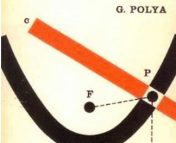James Mason completed his PhD in 2016 April at the University of Colorado at Boulder in Aerospace Engineering Sciences. He received his Bachelor’s in astrophysics from the University of California at Santa Cruz and is now continuing his graduate work as a postdoc at the Laboratory for Atmospheric and Space Physics. In his free time he likes to compose music (such as that in the final video) and enjoys the outdoors in Boulder, Colorado with his dog and fiancé.
I saw my name in space, and I got to help put it there. It was 4:05 AM, and we were gathered in the lab’s auditorium at the University of Colorado Boulder (CU) watching the live-stream from the International Space Station. We watched the seconds count down as the pictures from the space station showed blue ocean and white clouds sliding across the frame with a big deployer arm in the foreground. That deployer contained 4 years hard work from dedicated students and professionals. We reached the appointed time; a door on the front of the box opened, and for just 4 seconds we saw our spacecraft as it was ejected from the ISS to orbit Earth on its own. Later on, we received 4K-resolution pictures taken by British astronaut Tim Peake, which I digitally enhanced, CSI style, to make the laser-engraved nameplate on the back of the spacecraft legible.

I had completed my aerospace engineering PhD just 8 days earlier. Coming into graduate school, the only hardware experience I had was a couple of lab courses as part of my undergraduate astrophysics curriculum, which I didn’t really enjoy, and didn’t get much out of. As a result, I was skeptical when encouraged to join the CubeSat project in grad school. My knowledge of satellites was limited to “Hubble is awesome”. To learn more, I took a one semester course that provided a high-level overview of all the subsystems of a satellite and the kinds of mission design considerations that make every science satellite unique. Now equipped with a rough sketch of what’s in a satellite, I was volunteered into a project management position on the new CubeSat program. It was a little bit scary but very exciting.
It was immediately apparent that this was not like a class project to be counted as some percentage of the grade for a course with a wider objective. Instead, this was a multi-year project that was banking on securing serious funding (about $1 million) and actually sending hardware to space to take scientifically valuable (read, peer-review quality) measurements and communicating those data back to our lab. None of us students had taken on anything like this before. We didn’t have the skills to design a spacecraft. But we had great mentors who had done this all before and they kept us pointed in the right direction.
We learned how to design mechanically with computer-aided design software, electrically with software for creating schematics and printed circuit board layouts, and optically with specialized software; how to generate orbit scenarios with Systems Tool Kit; and how to document all of that work. We spent a lot of time on computers but we did make a point to build early and iterate often. We built the structure of the spacecraft as well as the electronics boards and started fit checks and testing as soon as possible. One day, all the final parts were in hand and we built up the whole CubeSat for the last time. Then we carried out some more major testing: shaking the spacecraft to simulate a rocket ride and putting it in a vacuum chamber to simulate the space environment. Finally, it was ready to be delivered. I got the privilege and responsibility of delivering this tiny satellite, in a case that tucked away perfectly under the seat in front of me on the flight from Denver to Houston. It launched from the Kennedy Space Center to the space station, along with cargo resupply for the astronauts: snacks, some Microsoft Hololenses for them to play with, and about a dozen other CubeSats. A few months later we were sitting in the lab watching the live feed from the space station as it was deployed from the airlock.
I worked on this project for 4 years, and through it discovered a career path that still excites me. The first day of grad school, I only had a nebulous notion of becoming a research scientist but didn’t know what field or what day-to-day life might be like. I only switched from astrophysics in undergrad to aerospace engineering in grad school because one of my professors suggested it as a path with more career options. Now I know that I want to be a hands-on principal investigator working on science satellite missions, based on the microcosm of a career that grad school provided. I think that’s a good way to look at grad school: a time to find what you naturally become enthusiastic about; what you’ll spend your free time working on without it feeling like work (most of the time).





Trackbacks/Pingbacks